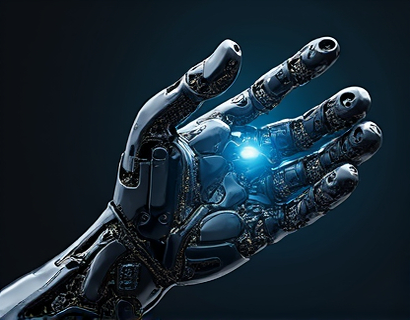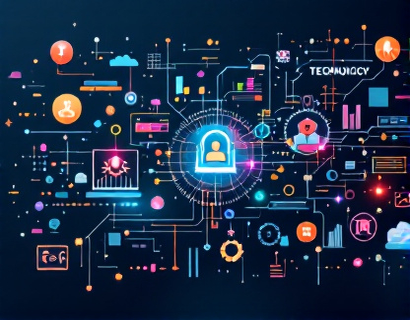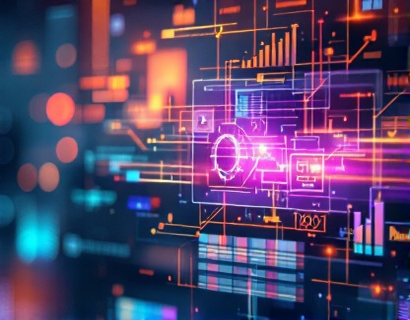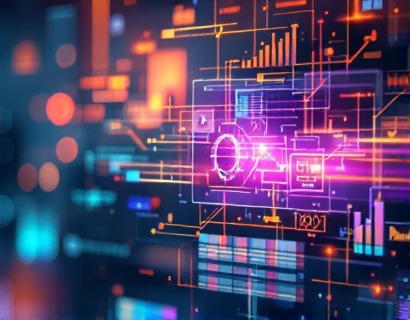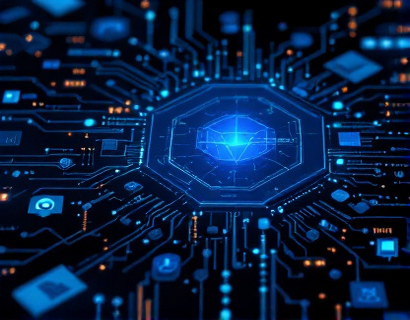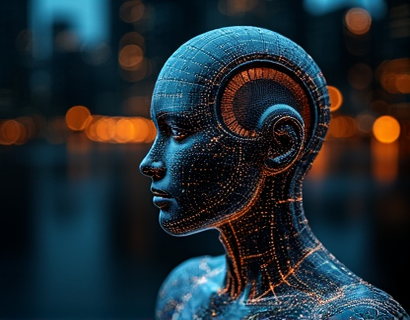Revolutionizing Digital Services: The Synergy of Crypto and AI
The intersection of cryptocurrency and artificial intelligence (AI) is ushering in a new era of digital services, fundamentally transforming how users interact with applications and platforms. This fusion leverages the decentralized and secure nature of blockchain technology with the advanced computational capabilities of AI, creating a powerful synergy that enhances user experiences and opens up new possibilities for innovation.
Understanding the Basics
To fully appreciate the impact of this tech fusion, it's essential to understand the fundamental concepts of both cryptocurrency and AI. Cryptocurrency, often referred to as digital or virtual currency, operates on a decentralized network known as a blockchain. This technology ensures transparency, security, and immutability, making it an ideal foundation for various financial and non-financial applications.
Artificial intelligence, on the other hand, encompasses a range of technologies designed to simulate human intelligence in machines. These include machine learning, natural language processing, and computer vision. AI's ability to analyze vast amounts of data, learn from patterns, and make decisions autonomously makes it a transformative force in numerous industries.
The Convergence of Crypto and AI
The convergence of cryptocurrency and AI is not merely a coincidence but a natural evolution driven by the complementary strengths of both technologies. Cryptocurrency provides a secure and transparent environment for AI applications to operate, while AI enhances the functionality and efficiency of blockchain-based systems.
One of the key areas where this synergy is evident is in the development of decentralized applications (dApps). dApps leverage AI to provide smarter, more responsive, and user-friendly experiences. For instance, AI-driven chatbots can handle customer inquiries on dApps, offering instant and accurate responses without the need for human intervention.
Enhanced Security and Trust
Security is a paramount concern in the digital world, and the combination of cryptocurrency and AI addresses this issue effectively. Blockchain's inherent security features, such as cryptographic hashing and consensus mechanisms, ensure that data is tamper-proof. AI enhances this security by detecting and mitigating potential threats in real-time.
Machine learning algorithms can analyze patterns in blockchain transactions to identify anomalies that may indicate fraudulent activity. This proactive approach to security not only protects users' assets but also builds trust in blockchain-based platforms. The transparency of blockchain, combined with AI's predictive capabilities, creates a robust framework for secure and trustworthy digital interactions.
Optimized User Experiences
The integration of AI into cryptocurrency-driven services significantly enhances user experiences. AI algorithms can analyze user behavior and preferences to personalize content and recommendations, making interactions more intuitive and efficient. For example, AI-powered recommendation systems on blockchain-based marketplaces can suggest products or services based on a user's past purchases and browsing history.
Moreover, AI-driven interfaces can adapt to individual user needs, providing a more tailored and seamless experience. Voice-activated assistants, powered by natural language processing, can interact with users in a more natural and conversational manner, reducing the learning curve associated with using blockchain-based applications.
Efficient Data Processing and Analytics
AI's strength lies in its ability to process and analyze large datasets quickly and accurately. In the context of cryptocurrency, this capability is invaluable for managing and optimizing blockchain networks. AI algorithms can handle complex tasks such as transaction validation, smart contract execution, and network monitoring, ensuring smooth and efficient operations.
Additionally, AI-driven analytics can provide insights into user behavior and market trends, helping developers and businesses make data-informed decisions. This data-driven approach enables the creation of more effective and user-centric services, further enhancing the overall digital experience.
Innovative Financial Solutions
The fusion of cryptocurrency and AI is giving rise to innovative financial solutions that were previously unimaginable. One such example is decentralized finance (DeFi), which uses blockchain and AI to offer traditional financial services in a decentralized manner. AI algorithms can optimize trading strategies, manage risk, and automate investment decisions, making DeFi more accessible and efficient.
Stablecoins, a type of cryptocurrency designed to maintain a stable value, can benefit from AI by adjusting their algorithms to respond to market fluctuations in real-time. This dynamic adjustment helps maintain stability and reduces volatility, making stablecoins a more reliable store of value and medium of exchange.
Smart Cities and IoT Integration
The impact of crypto and AI extends beyond financial services to smart cities and the Internet of Things (IoT). AI-powered IoT devices can collect and analyze data from various sources, such as sensors and cameras, to optimize city operations. Blockchain ensures the secure and transparent sharing of this data among different stakeholders.
For instance, AI-driven traffic management systems can use blockchain to record and verify traffic data, reducing the risk of tampering and ensuring accurate traffic flow optimization. Similarly, smart grids can leverage AI to manage energy distribution more efficiently, with blockchain providing a secure platform for peer-to-peer energy trading.
Challenges and Considerations
Despite the numerous benefits, the integration of cryptocurrency and AI also presents challenges that need to be addressed. One of the primary concerns is regulatory compliance. The decentralized nature of blockchain and the evolving landscape of AI regulations require careful navigation to ensure compliance and avoid legal pitfalls.
Another challenge is the technical complexity involved in developing and maintaining these systems. Developers need a deep understanding of both blockchain and AI to create robust and scalable solutions. Additionally, the computational resources required for AI algorithms can be substantial, necessitating efficient and cost-effective solutions.
Future Prospects
The future of digital services is increasingly intertwined with the synergy of cryptocurrency and AI. As technology continues to advance, we can expect even more innovative applications and use cases. The development of quantum computing, for instance, could revolutionize both blockchain and AI, opening up new possibilities for faster and more secure data processing.
Moreover, the growing adoption of 5G and edge computing will further enhance the performance and accessibility of AI-driven blockchain applications. These advancements will enable more real-time and localized processing, reducing latency and improving user experiences.
Conclusion
The fusion of cryptocurrency and AI is not just a technological trend but a transformative force reshaping the digital landscape. By combining the security and transparency of blockchain with the intelligence and efficiency of AI, we are witnessing the birth of a new generation of digital services that offer enhanced user experiences and unprecedented opportunities for innovation. As this field continues to evolve, staying informed and adaptable will be crucial for anyone looking to harness the potential of these powerful technologies.








